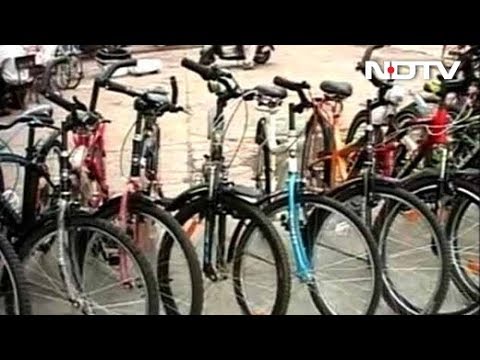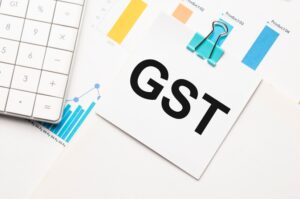GST Rate on Bicycles Business
- 29 Aug 24
- 8 mins
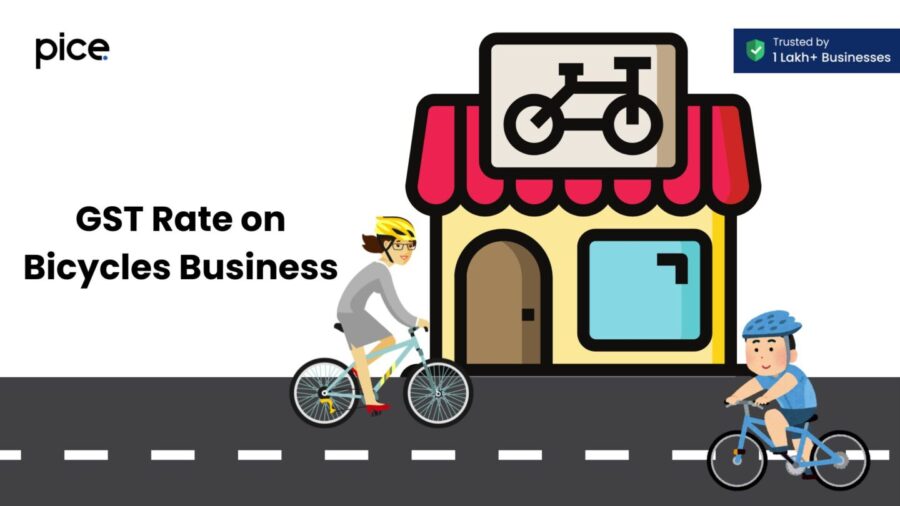
GST Rate on Bicycles Business
Key Takeaways
- The GST rate for bicycles and accessories aims to simplify the taxation framework and harmonize taxes within the nation.
- The GST rates for two-wheelers in India range from 5% to 31%, depending on factors like engine capacity and type of vehicle.
- Electric two-wheelers benefit from lower GST rates and additional incentives to encourage eco-friendly transportation.
- The GST rate for bicycle components and accessories is set at 18%, promoting affordability and maintenance of bicycles.
- Government initiatives and subsidies, such as the Delhi e-cycles incentive scheme, support the adoption of electric bicycles and sustainable transportation.
The cycle GST rate denotes the Goods and Services Tax (GST) applied to bicycles and their accessories. This tax, based on consumption, is imposed on the distribution of goods and services, intending to harmonise and simplify the taxation framework within a nation. Scroll through this blog to learn more about the current GST rates applicable to bicycles and their impact on the industry.
About GST on Two-Wheelers
Two-wheelers are popular in India as they are cheap and convenient for many people when it comes to transportation. The introduction of GST has caused a shift in the tax systems for the two-wheeler industry vehicles. Since two-wheelers are part of the transport industry of India, they come under the goods segment and as such charged with GST. Earlier, a 30% tax rate applied to all categories of two-wheelers. Upon implementation of GST, the tax rate applicable to two-wheelers in India now ranges from 5% to 31%.
The following are some benefits of two-wheelers:
- Transparency: GST simplifies the tax structure, making it easier for consumers to comprehend the tax implications on their purchases.
- Reduced Price Discrepancies: The implementation of GST has helped in the elimination of variation between bike prices of different states and union territories, making the prices more balanced throughout India.
- Electric Vehicle Incentives: Electric two-wheelers enjoy lower GST rates and additional incentives, encouraging the adoption of environmentally friendly transportation options.
Current Bicycle GST Rates
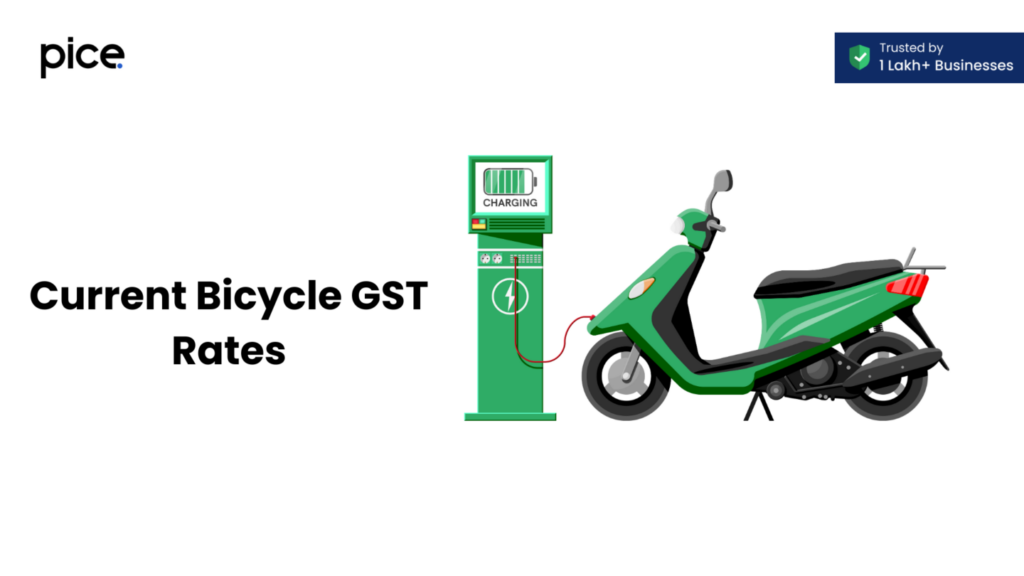
Before the new taxation system, different taxes were charged individually at the state level and the central level. The implementation of the GST integrated these taxes into one combined structure. As a result, the overall tax burden has been reduced.
The following table highlights the current two-wheeler GST tax rate list for 2024 in India:
| Category | GST Rate |
| GST on electric bikes | 5% |
| GST on two-wheeler insurance policy | 18% |
| GST on two-wheelers with consumables, lubricants, and battery charging | 18% |
| GST on two-wheeler items such as gauge oil level, clutch cables, and brake pads | 28% |
| GST on bikes with engine capacity of less than 350CC | 28% |
| GST on bikes with engine capacity of more than 350CC | 31% |
GST on Purchase of Bikes
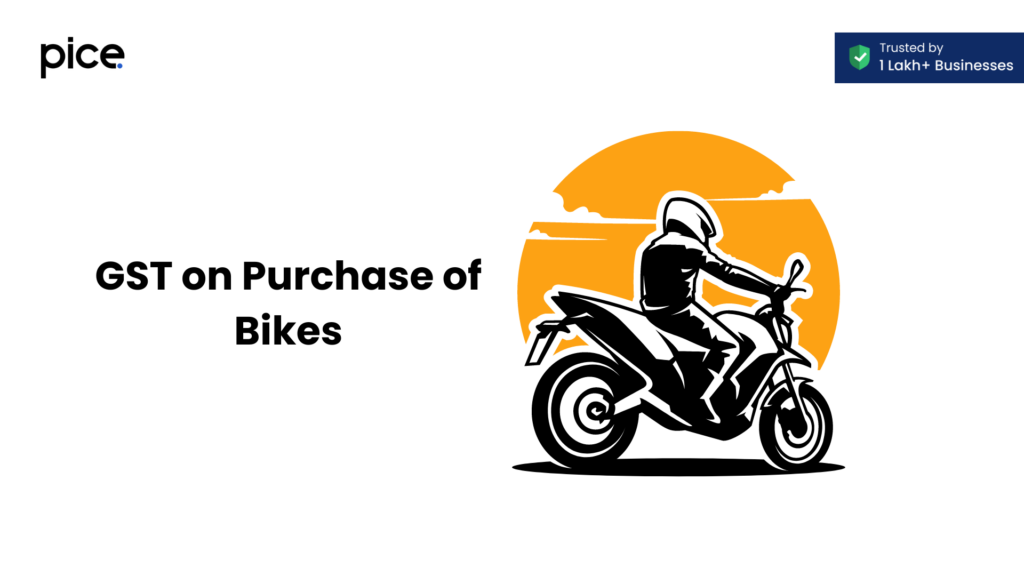
The tax on bikes is mainly influenced by their engine capacity. For instance, Hero Unicorn or Hero Splendor with engine capacity below 350cc have a GST rate of 28%. In contrast, high-end bikes like Royal Enfield Classic with more than 350cc engine capacity incur a higher GST rate of 31%. This variation in GST rates affects the two-wheeler prices in India based on their engine capacity.
💡 If you want to pay your GST with Credit Card, then download Pice Business Payment App. Pice is the one stop app for all paying all your business expenses.
GST on Purchase of Electric Bikes
The use of electric bicycles has been promoted because of increasing fuel prices and pollution. To promote their use, the electric bike GST rate has been placed at 5%. Earlier, the GST rate applied to electric bikes was higher at 12% of their cost. This has greatly reduced costs that are associated with electric bikes and has made them affordable to buyers.
GST on Insurance Policy for Bikes
The GST chargeable for two-wheeler insurance policies in India is 18%. This applies to both the third-party and the comprehensive insurance policies. Before GST, the tax structure for bike insurance included VAT, CST, and excise duty, totalling a 15% tax rate. The transition to GST has streamlined the tax process, ensuring a consistent 18% GST rate on bike insurance premiums.
GST on Bicycle Components and Accessories
In India, the cycle GST rate is set at 18%. This rate is expected to be reasonable to ensure affordability and at the same time generate enough revenues. Components and accessories, including spare parts necessary for the maintenance and repair of bicycles, are generally subject to the same 18% GST rate.
This uniformity of rates across the cycling industry is beneficial in maintaining the affordability of cycling as a viable transport and recreational option. It thus supports the government’s objectives of lowering carbon footprint and encouraging healthier lifestyles.
Impact of GST on Bicycle Industry
The cycle GST rate has a major impact on the future of the cycling business and its growth. Implementation of the reduced GST rate means that the cost of bicycles is reduced, thus increasing demand for bicycles, making them more affordable and increasing their sale. This leads to higher production, employment opportunities, and the expansion of various industries, such as vehicle manufacturers, vendors and maintenance shops.
Moreover, a lower GST rate on spare parts and accessories promotes maintenance and repairs, providing additional support to the cycling sector. Additionally, the implementation of GST on bikes in India has simplified the tax process and minimised the compounding effect of taxes. Consequently, the new tax framework has shifted the market dynamics within the entire bicycle industry. The government is also considering further reducing the GST to stimulate bike sales across the country.
Government Initiatives and Subsidies on Bicycle
As per a report of 2022, the Delhi government has introduced a scheme offering financial incentives for purchasing electric cycles. The key incentives include:
- E-Cycles Purchase Incentive: 25% of the price (up to ₹5,500), plus an additional ₹2,000 for the first 1,000 buyers.
- E-Cargo Cycles Purchase Incentive: 33% of the price (up to ₹15,000).
- Scrapping Incentive: Up to ₹3,000 for scrapping old internal combustion engine vehicles.
These incentives will be credited within 7 working days and are admissible to all residents, corporate or individual, having a valid GST registration.
Another reform that was undertaken by the government was during the COVID-19 outbreak. The government of India began the India Cycles4Change Challenge and Streets4People Challenge in 2020 to encourage people to use bikes and walk in cities. These initiatives, part of the Smart Cities Mission, involved over 100 cities in creating cycling-friendly infrastructure and pedestrian zones.
The government also provides financial incentives for purchasing electric cycles, such as a 25% purchase incentive (up to ₹5,500) and additional subsidies for early adopters and e-cargo cycles. Such initiatives are intended to transform the movement of vehicles, making roads safer and more friendly to cyclists and pedestrians, as well as supporting sustainable transport through GST benefits to bicycles and related items.
The Bottom Line
It is imperative that both the buyers and the manufacturers understand the cycle GST rate in India. By considering the factors influencing the GST base rate and understanding any additional taxes involved, consumers can make well-informed decisions when purchasing a two-wheeler. The role of GST in India’s evolving tax structure cannot be overstated, and this aspect indicates how it helps to maintain affordable and sustainable two-wheelers for transportation in the country.







